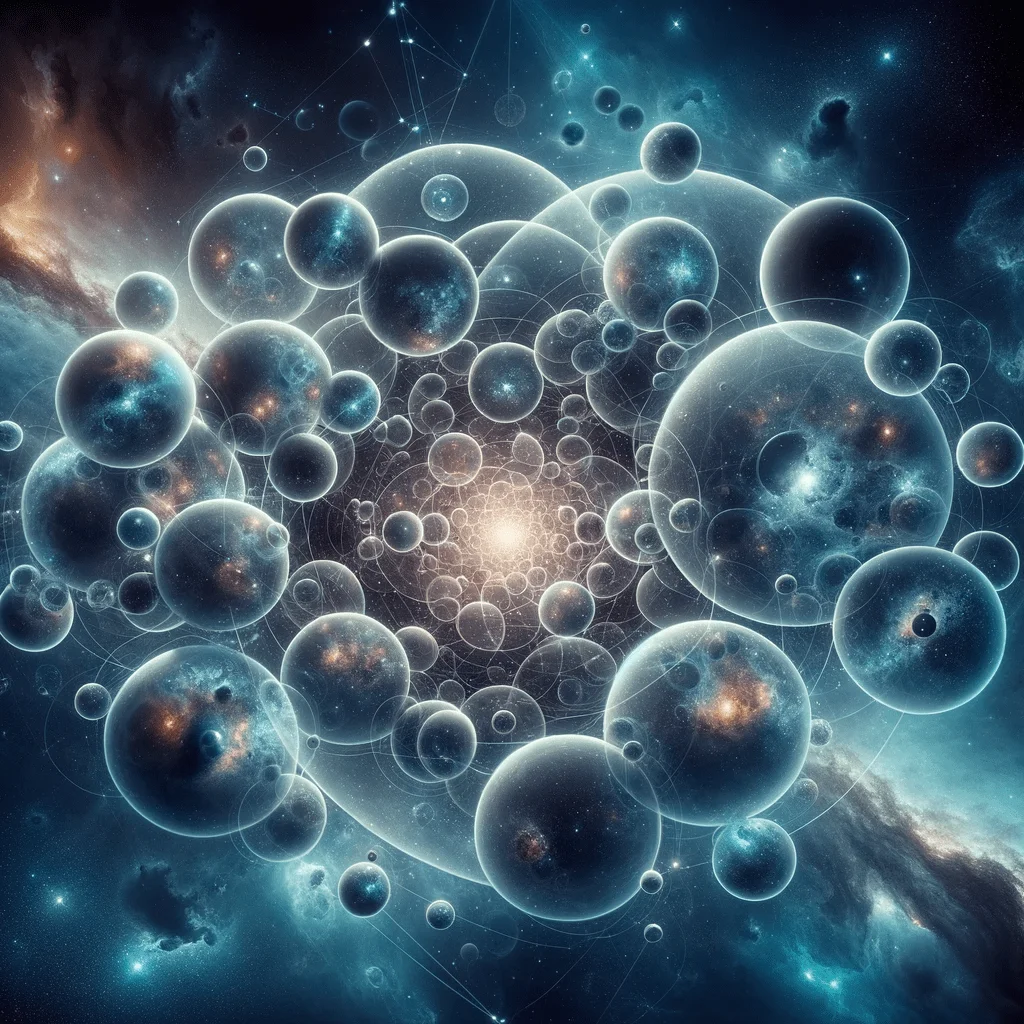Multiverse Parallel Universes

Multiverse is a concept in theoretical physics that proposes the existence of multiple universes, including our own. According to this theory, there are many parallel universes coexisting with our own, each with different physical laws, properties, and histories. The idea of the multiverse has gained popularity in recent years as scientists seek to explain the mysteries of the cosmos and the origins of the universe.
The concept of the multiverse was first introduced by physicist Hugh Everett in 1957, but it has since been expanded upon by a number of other scientists, including Andrei Linde, Brian Greene, and Max Tegmark.
The multiverse is a theoretical framework that suggests the existence of many parallel universes, each with its own set of physical laws and properties. These universes may be similar or vastly different from our own, and they may have different histories and timelines.
The concept of the multiverse has been discussed for decades, but it has gained significant attention and research in recent years. The idea of the multiverse is based on theories in physics and cosmology, which seek to understand the nature and origins of the universe.
The multiverse theory is an attempt to explain some of the mysteries of the universe that cannot be explained by current scientific models, such as the existence of dark matter, the nature of cosmic inflation, and the fine-tuning of physical constants. It also provides a framework for exploring questions about the origins and fate of the universe.
One of the most well-known versions of the multiverse theory is the “inflationary multiverse,” which suggests that the universe underwent a period of rapid expansion shortly after the Big Bang, causing it to split into multiple universes. This theory was first proposed by physicist Andrei Linde in 1986. (Source: Scientific American)
The “Many-Worlds Interpretation” of quantum mechanics, proposed by Hugh Everett in 1957, is a version of the multiverse theory that suggests that every quantum event creates multiple parallel universes, each with a different outcome. This theory has been the subject of much debate and discussion in the scientific community. (Source: Forbes)
Some scientists believe that the multiverse theory may be testable through the study of cosmic microwave background radiation, which is thought to be a remnant of the Big Bang. By analyzing patterns in this radiation, scientists may be able to detect evidence of other universes. (Source: Live Science)
Some, like physicist Brian Greene, believe that the theory is a natural extension of current scientific understanding and that it provides a possible explanation for some of the mysteries of the universe. Others, like physicist Sabine Hossenfelder, are more skeptical and argue that the multiverse theory is untestable and therefore not scientifically valid.
Books on the topic of the multiverse theory include “The Hidden Reality: Parallel Universes and the Deep Laws of the Cosmos” by Brian Greene and “Our Mathematical Universe: My Quest for the Ultimate Nature of Reality” by Max Tegmark. These books explore the scientific basis of the multiverse theory and its potential implications for our understanding of the universe.
There are some proposed experiments and observations that could provide indirect evidence for the existence of parallel universes:
- Cosmic Microwave Background Radiation (CMB) – The CMB is a faint glow of radiation that permeates the entire universe, thought to be a relic from the Big Bang. Some versions of the multiverse theory predict that the CMB should have certain patterns that are not seen in the current observations. Detecting these patterns would support the existence of parallel universes.
- Neutrino Detection – Some versions of the multiverse theory propose that there could be other universes that are close enough to ours to produce a detectable influence. One way to test this idea is through the detection of high-energy neutrinos, which can pass through matter almost undisturbed. If there are other universes close enough to ours, they could produce neutrinos that would be detectable by Earth-based instruments.
- Observations of Dark Matter – Dark matter is an invisible substance that is thought to make up a large fraction of the mass of the universe. Some versions of the multiverse theory propose that dark matter could interact with other universes, producing observable effects. Observations of the distribution and properties of dark matter could provide evidence for this idea.
- Gravitational Waves – Gravitational waves are ripples in the fabric of spacetime that are produced by the movement of massive objects, such as black holes. Some versions of the multiverse theory propose that the existence of other universes could produce gravitational waves that would be detectable by gravitational wave observatories on Earth.
- High-Energy Particle Colliders – Particle colliders, such as the Large Hadron Collider (LHC), are powerful instruments that can accelerate particles to very high speeds and energies. Some versions of the multiverse theory propose that particles from other universes could occasionally collide with particles in our universe, producing unique signatures that could be detected at high-energy particle colliders.
- String Theory – String theory is a theoretical framework that attempts to unify all the fundamental forces and particles of the universe into a single, coherent theory. Some versions of string theory propose the existence of a “landscape” of possible universes, each with its own set of physical laws and properties. By studying the mathematics of string theory, physicists may be able to identify signatures of parallel universes.
It’s important to note that these experiments and observations are still in the early stages of development and are subject to much debate and scrutiny within the scientific community. However, as our understanding of the universe continues to evolve, it is possible that new technologies and methods will be developed that will allow us to explore the multiverse theory more directly.

